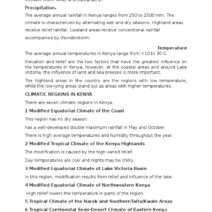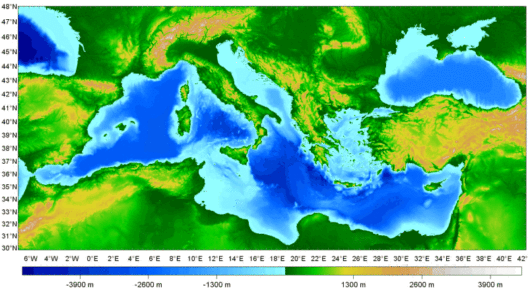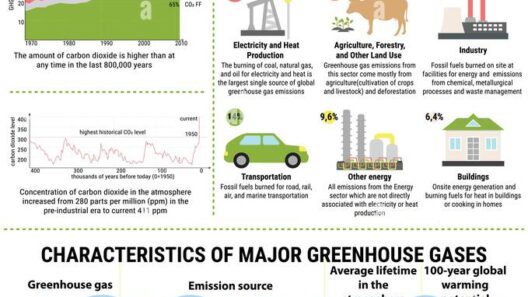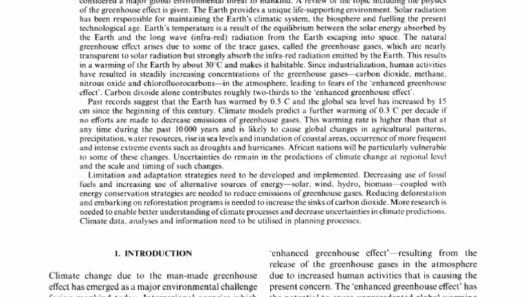Venus, often called Earth’s twin due to its similar size and proximity, harbors a climate so inhospitable that it serves as a stark warning regarding the potential consequences of uncontrolled greenhouse gas emissions. The study of Venus’s extreme climate serves both as an object of fascination and as an urgent call to analyze our own planet’s future. Understanding what initiated the runaway greenhouse effect on Venus involves dissecting its chemical composition, geological history, and solar interactions. This exploration presents an opportunity to learn valuable lessons about planetary science and climate change.
To comprehend the origins of Venus’s climate catastrophe, we must first analyze the primordial conditions of the planet. Venus’s surface temperature averages around 467 degrees Celsius (872 degrees Fahrenheit), primarily a consequence of atmospheric composition and the greenhouse effect—a cycle that traps heat within the planet’s dense atmosphere.
In its formative years, Venus may have held significant amounts of water, potentially hosting oceans much like Earth. However, solar radiation plays a pivotal role in shaping planetary atmospheres, and in Venus’s case, its proximity to the Sun had repercussions that would set the stage for its present-day climate.
The initial triggers of the runaway greenhouse effect can be summarized into several interlinked factors. These include volcanic activity, solar irradiance, and the lack of a protective magnetic field.
Volcanic Activity: The Silent Engine Behind Climate Change
Volcanic eruptions are crucial in understanding both Venus’s geological and atmospheric conditions. The planet boasts numerous volcanic features and evidence suggests that it may still be volcanically active. When volcanic eruptions occur, vast quantities of carbon dioxide—a potent greenhouse gas—are released into the atmosphere. Over geological timescales, these eruptions would have contributed significantly to the greenhouse effect.
On early Venus, repeated volcanic eruptions could have led to an increase in atmospheric carbon dioxide concentrations, trapping more and more heat. Over time, as temperatures escalated, any existing water would have entered a feedback loop: heating caused evaporation, and the loss of water vapor, in turn, further exacerbated the warming. Thus, the volcanoes served as catalysts fueling the runaway greenhouse effect.
Solar Irradiance: The Role of the Sun in Climate Dynamics
The Sun has played a formidable role in the thermal evolution of Venus. Being the second planet from the Sun, its exposure to solar radiation is substantial. Scientific understanding indicates that early in the history of the solar system, the Sun was less luminous than it is today. As the Sun evolved, its intensity increased, mercilessly heating Venus and its atmosphere.
Heightened solar irradiance would have affected any existing water bodies, forcing them to vaporize. Water vapor is a natural greenhouse gas, and with its concentrations rising, the atmospheric warming perpetuated its own cycle. This was compounded by the dense cloud cover formed by sulfuric acid, which trapped sunlight and further elevated surface temperatures. The more the temperature rose, the more water vapor entered the atmosphere, creating an overwhelming greenhouse effect that spiraled out of control.
Lack of a Magnetic Field: A Flaw in Venus’s Defenses
In contrast to Earth, Venus lacks a significant magnetic field. The magnetic field acts as a shield against the solar wind—streams of charged particles released from the Sun. Without this protective barrier, Venus’s atmosphere was subject to sustained stripping by solar particles. This loss of atmosphere could have contributed to the inability of early Venus to maintain its water, pushing it further along the path to the current oppressive conditions.
Solar winds facilitated atmospheric escape, allowing lighter elements to dissipate while heavier gases predominated. Consequently, the carbon dioxide amplified the greenhouse effect while other elements crucial for a temperate climate vanished, leading Venus down a one-way street to extreme conditions. The lack of a magnetic field thus proved instrumental in the gradual degradation of its potential for habitability.
The Unyielding Feedback Loop: A Climate Catastrophe Unfolds
These intertwining factors—volcanic activity, solar irradiance, and the absence of a magnetic field—culminated in a profoundly inhospitable environment on Venus over billions of years. The mechanics of the runaway greenhouse effect are starkly evident in this context. Feedback loops develop when a change in a system leads to further increase or decrease of that change.
As temperatures rose, the natural cycle of evaporation intensified, leading to more significant greenhouse gas emissions. This resulted in further warming, creating a self-perpetuating climate catastrophe. In essence, Venus serves as a formidable example of how delicate the balance is regarding atmospheric conditions and the potential for irreversible changes.
Lessons for Earth: Your Responsibility in the Present
The case of Venus offers bitter wisdom for Earth. While our planet currently exhibits the necessary conditions for life, rampant anthropogenic greenhouse gas emissions are pushing it toward a warming that might echo that of Venus. The urgency stems from our culpability in altering the climate on a global scale. Unlike Venus, which faced inhospitable conditions primarily due to natural forces over eons, Earth faces rapid climate change instigated largely by human activities.
Continued observations of Venus, in conjunction with advancements in climate science, emphasize the importance of understanding planetary atmospheres. By identifying the factors contributing to the runaway greenhouse effect on Venus, societies can foster discussions and actions aimed at mitigating similar, albeit different, challenges on Earth.
As we reflect upon the origins of Venus’s extreme climate, it serves as a reminder and a critical point of inquiry for both scientists and citizens alike to prioritize sustainable practices. Our world may still possess the opportunity to avoid the runway greenhouse scenario that doomed its twin. The stark contrasts between Venus and Earth elucidate the myriad pathways that planetary evolution can take, with Earth’s fate hanging in the balance. Learning from the past is no longer a luxury but a necessity.








